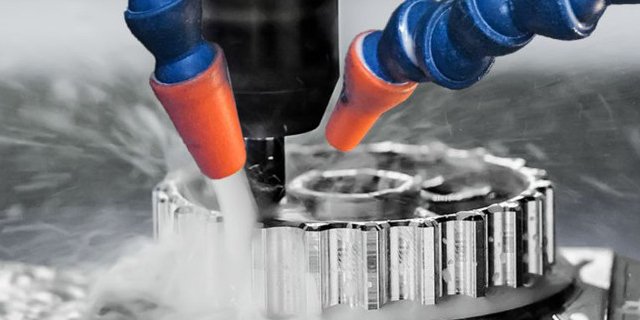Yet, many startups stumble in the prototyping phase by building too much, too soon—or worse, building the wrong thing. A great prototype does not merely look convincing—it functions as a decision-making and validation tool. It helps teams save resources, gather feedback, and make data-driven pivots.
Whether you’re building a software platform, a physical product, or a hybrid hardware-software innovation, understanding how to prototype strategically can be the difference between scaling and stalling.
What is a Prototype?
At its core, a prototype is an early version of your product designed to test one or more key aspects before full-scale development. It is not a final version, but a deliberate, functional placeholder that helps teams:
- Identify usability issues
- Get stakeholder feedback
- Validate functionality
- Test assumptions
- Save on costs and time
Types of Prototypes
| Prototype Type | Description | Use Case |
| Low-Fidelity | Sketches, wireframes, paper models | Early brainstorming and conceptualization |
| Medium-Fidelity | Clickable wireframes, simple mockups | Usability testing, basic navigation validation |
| High-Fidelity | Interactive UI, real data simulations, physical models | Stakeholder presentations, investor pitches, and final testing |
Your prototype doesn’t have to simulate everything—just the right things.
Why Prototyping is Critical for Startups
Startups face a tough challenge: limited resources and little room for error. Prototypes help bridge the gap between an idea and a successful launch. Here’s why prototyping matters so much in early-stage development:
- Reduces Market Risk
Every product is based on assumptions. Prototyping allows you to test those assumptions early, before you sink months of development time.
- Speeds Up Investor Buy-In
Investors are often visual thinkers. A working prototype speaks louder than business plans. It shows you’ve thought things through and can execute.
- Enhances Product-Market Fit
You can only learn what your market truly wants by showing them something they can interact with. A prototype enables that conversation.
- Aligns Cross-Functional Teams
Prototypes act as shared artifacts between design, development, marketing, and business teams. Everyone works from the same understanding.
- Encourages Agile, Iterative Progress
Instead of building everything at once, prototyping allows you to develop iteratively, learn fast, and adjust your roadmap intelligently.
What Makes a Great Prototype?
- Clarity of Purpose
Every prototype should have a defined objective—testing usability, validating a feature, or exploring an interface. Avoid bloated versions trying to do too much.
- Realistic, Yet Flexible
A great prototype finds the balance between being real enough to test and light enough to modify. It simulates essential workflows, not entire systems.
- Aligned With User Expectations
It should reflect user behaviors and context, not just your internal vision. Human-centric design is key here—walk in your users’ shoes.
- Technically Grounded
Avoid building a prototype that suggests something technically unfeasible. Collaborate early with developers to keep it realistic.
- Feedback-Friendly
Prototypes should spark questions and feedback. They’re made to provoke reactions—whether from users, clients, or investors.
The Prototyping Commandments: Dos and Don’ts for Startups
Here’s a structured table summarizing the key practices startups must follow—and avoid—during prototyping:
The Do’s
| Define the Problem Clearly | Ensure your prototype solves a specific, well-scoped problem. Vague ideas lead to vague prototypes. |
| Focus on Core Features | Build only what’s necessary to demonstrate the core functionality or experience. |
| Start with Low-Fidelity | Begin with sketches or wireframes to explore the structure without overcommitting. |
| Test with Real Users | Use the prototype to get early reactions from your target users, not just your team. |
| Iterate Rapidly | Use feedback to improve quickly. Don’t get stuck refining one version endlessly. |
| Involve Cross-Functional Teams | Include insights from design, engineering, product, and marketing for a balanced approach. |
| Document Feedback & Learnings | Capture what users say and do. Let these insights guide your next steps. |
The Don’ts
| Don’t Build the Whole Product | Resist the urge to simulate everything. Focus only on high-impact features or flows. |
| Don’t Seek Perfection | Your prototype is meant to learn, not impress. It can—and should—be rough. |
| Don’t Ignore Technical Feasibility | Validate with your dev team to avoid proposing features that can’t be built. |
| Don’t Avoid Criticism | Invite tough feedback. If people only say nice things, you’re not learning. |
| Don’t Treat It as Just a Design Exercise | Prototyping is strategic—it impacts business decisions, roadmaps, and more. |
| Don’t Delay Launch Because of It | A prototype is a stepping stone. Don’t let it become a bottleneck. Move on to MVPs. |
Common Pitfalls Startups Must Avoid
Despite best intentions, many early-stage founders fall into familiar traps:
- Overengineering the Prototype
Instead of testing a hypothesis, they try to recreate the entire product experience. This drains time and causes delays.
- Skipping the Validation Step
A beautiful prototype is useless if it’s not tested with real users. Build-test-iterate should be a rhythm, not a one-time event.
- Ignoring Non-Visual Elements
In software, it’s easy to focus on UI screens and neglect system flows, performance, or backend integrations.
- Choosing the Wrong Tool
Using tools that don’t match your needs or your team’s capabilities leads to low-quality outputs. Tool selection should be based on fidelity needs, collaboration ease, and testing compatibility.
How to Choose the Right Prototyping Tool
Here are some commonly used tools based on product type:
| Need | Recommended Tools |
| UI/UX Mockups | Figma, Adobe XD, Sketch, InVision |
| Workflow Diagrams | Whimsical, FlowMapp, Miro |
| No-Code MVPs | Bubble, Glide, Webflow |
| Hardware Prototyping | Fusion 360, SolidWorks, TinkerCAD, 3D printing platforms |
| User Testing Feedback | Maze, Lookback, UserTesting.com |
Pick tools that:
- Allow rapid iterations
- Support collaboration (especially remote)
- Provide version control
- Integrate with your design/development workflow
Conclusion: Prototype With Purpose, Learn with Speed
For startups, a prototype is more than a design—it’s a learning engine. A great prototype is lean, purposeful, and built for interaction. It invites feedback, triggers conversation, and paves the way for a successful MVP.
By applying the right mindset and process, your prototype can help you move confidently from a hunch to a validated product strategy. Use it not to decorate, but to de-risk. Treat it as a core asset—not a side deliverable—and it will return your investment many times over.
Why Mechkonnect is Your Ideal Prototyping Partner
At Mechkonnect Industrial Solutions, we specialize in precision prototyping and industrial-grade product development for startups and established enterprises alike. From CAD design and simulation to functional mockups, CNC machining, 3D printing, and pilot production, we bring engineering expertise and innovation to every phase of your product’s lifecycle.
With in-house design capabilities, robust prototyping infrastructure, and a focus on manufacturability, we ensure your ideas are not only visualized but built for real-world performance. Whether you’re creating a mechanical component, an IoT device, or a hybrid solution, Mechkonnect helps you validate, iterate, and launch with confidence.
Bring your vision to life—with precision, speed, and strategy. Contact Mechkonnect today to prototype smarter.




